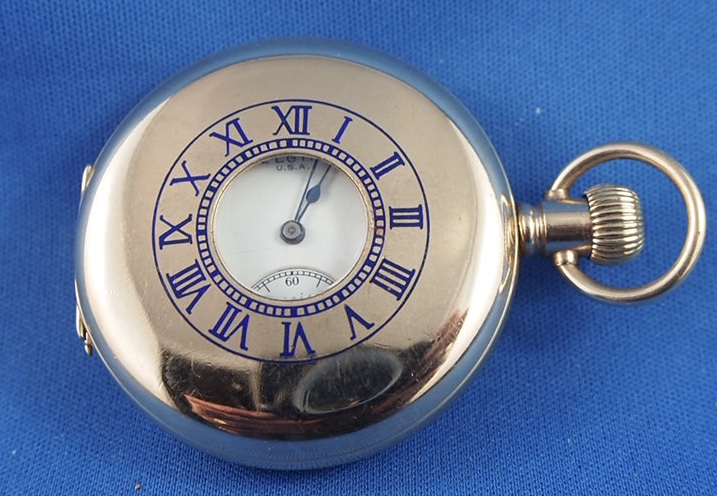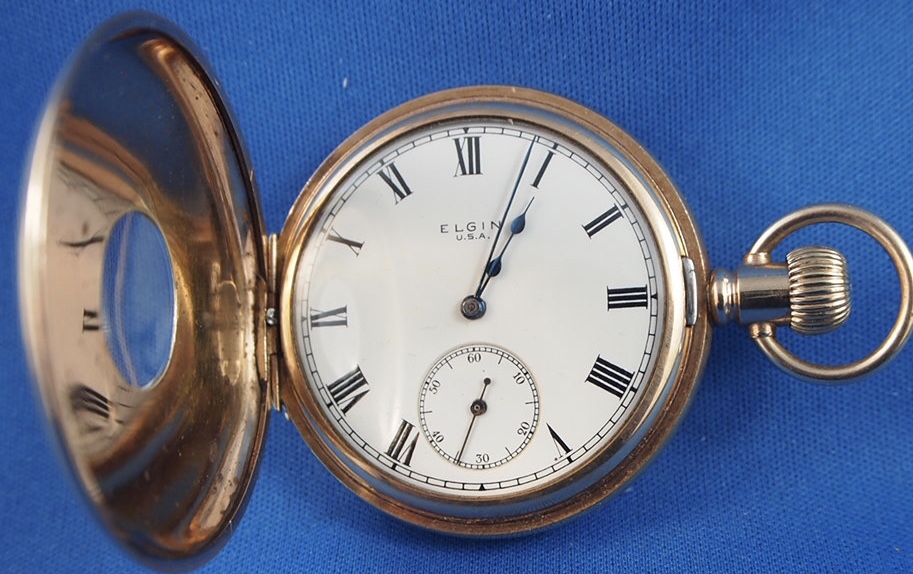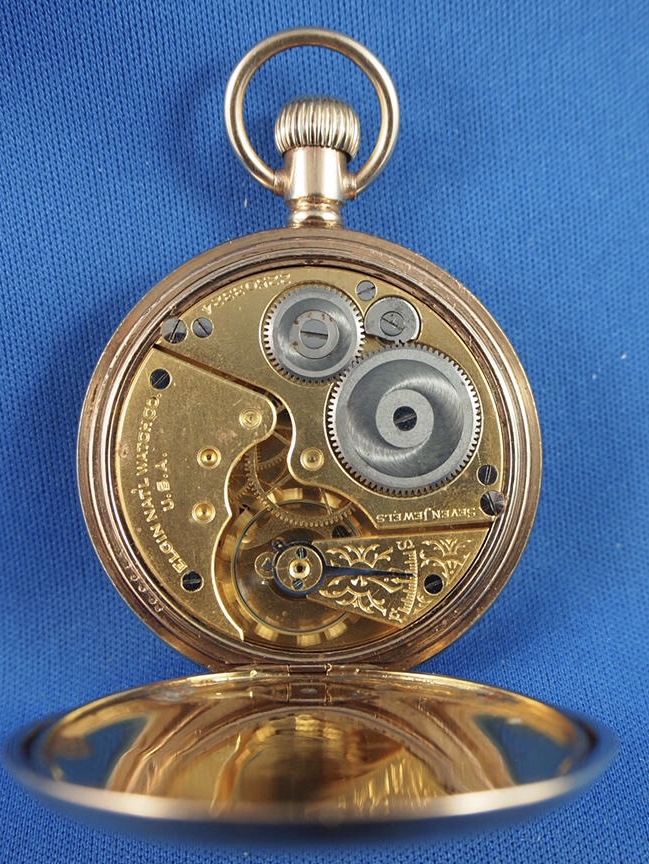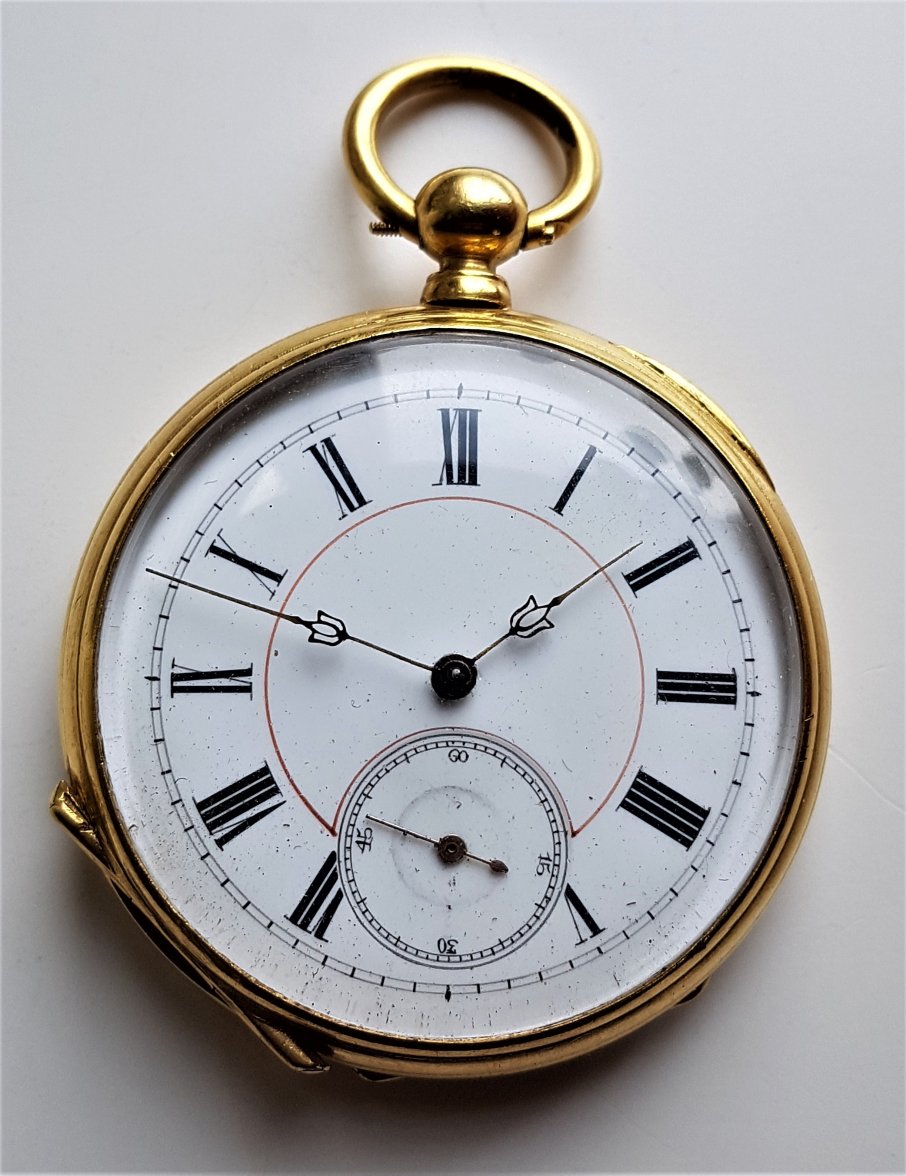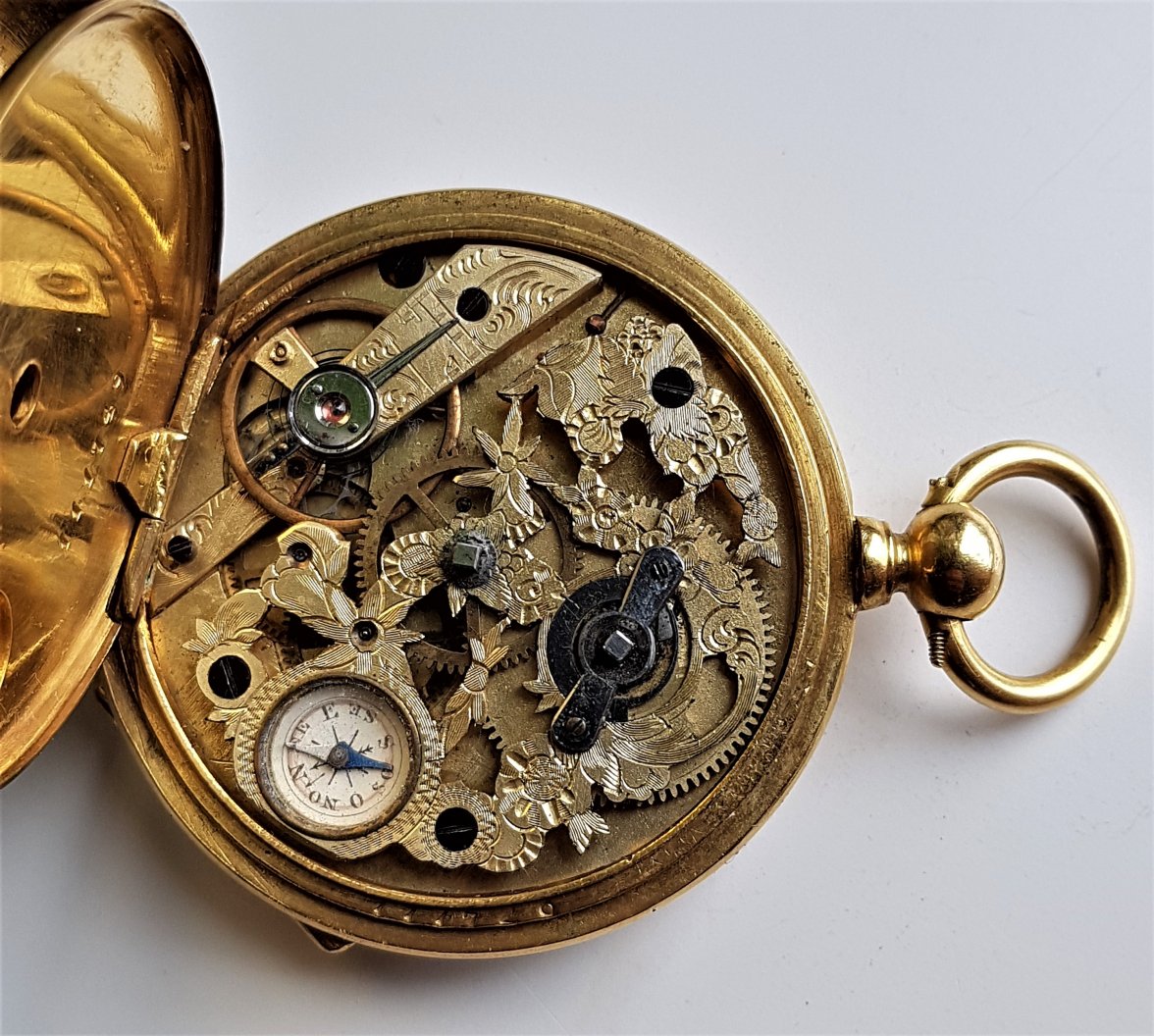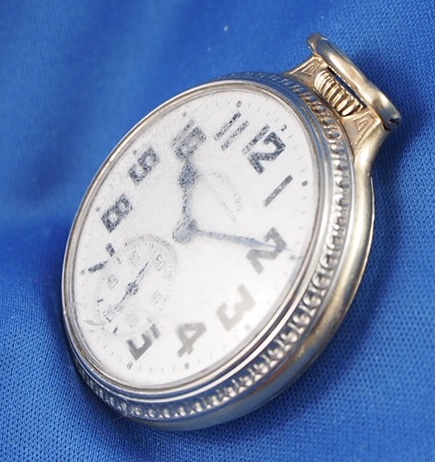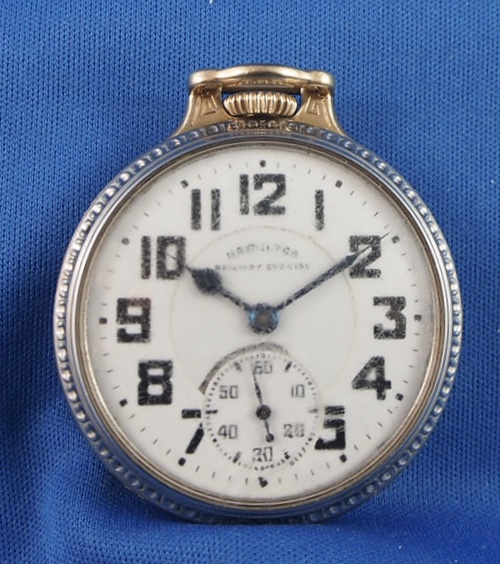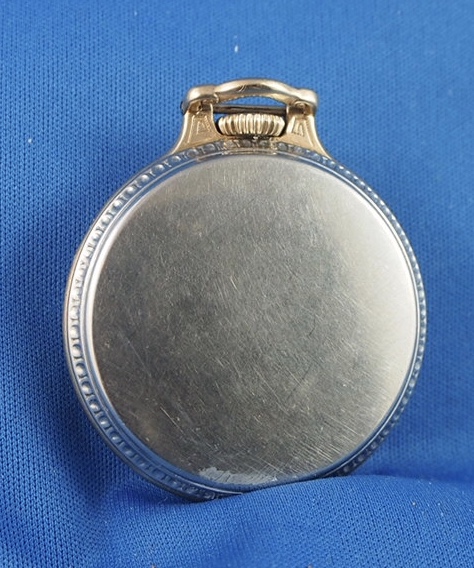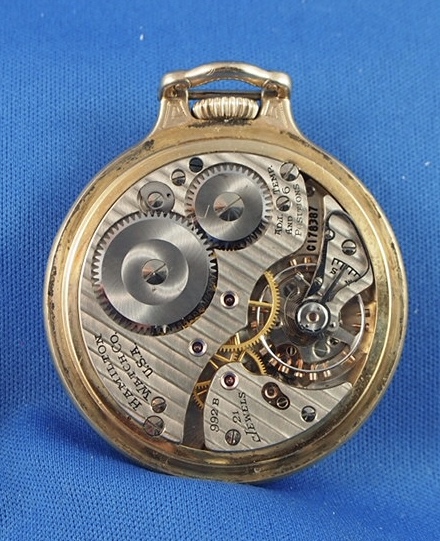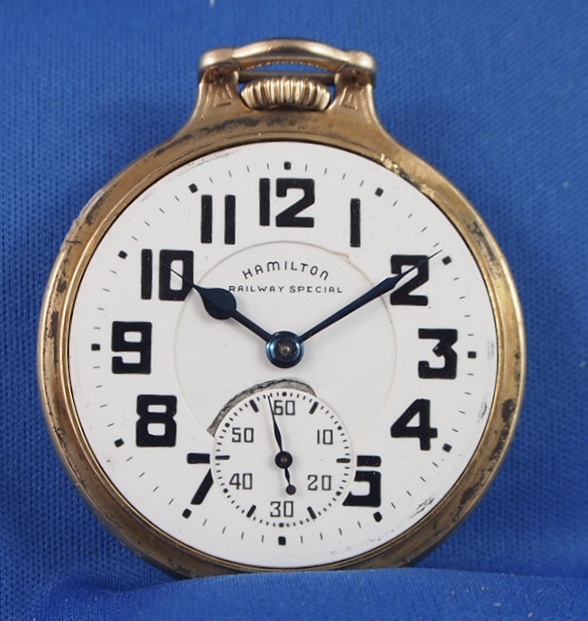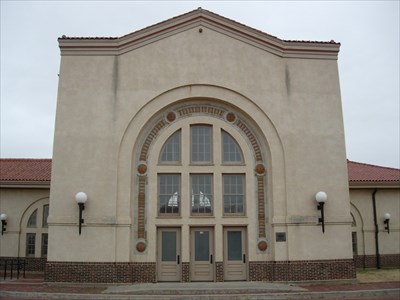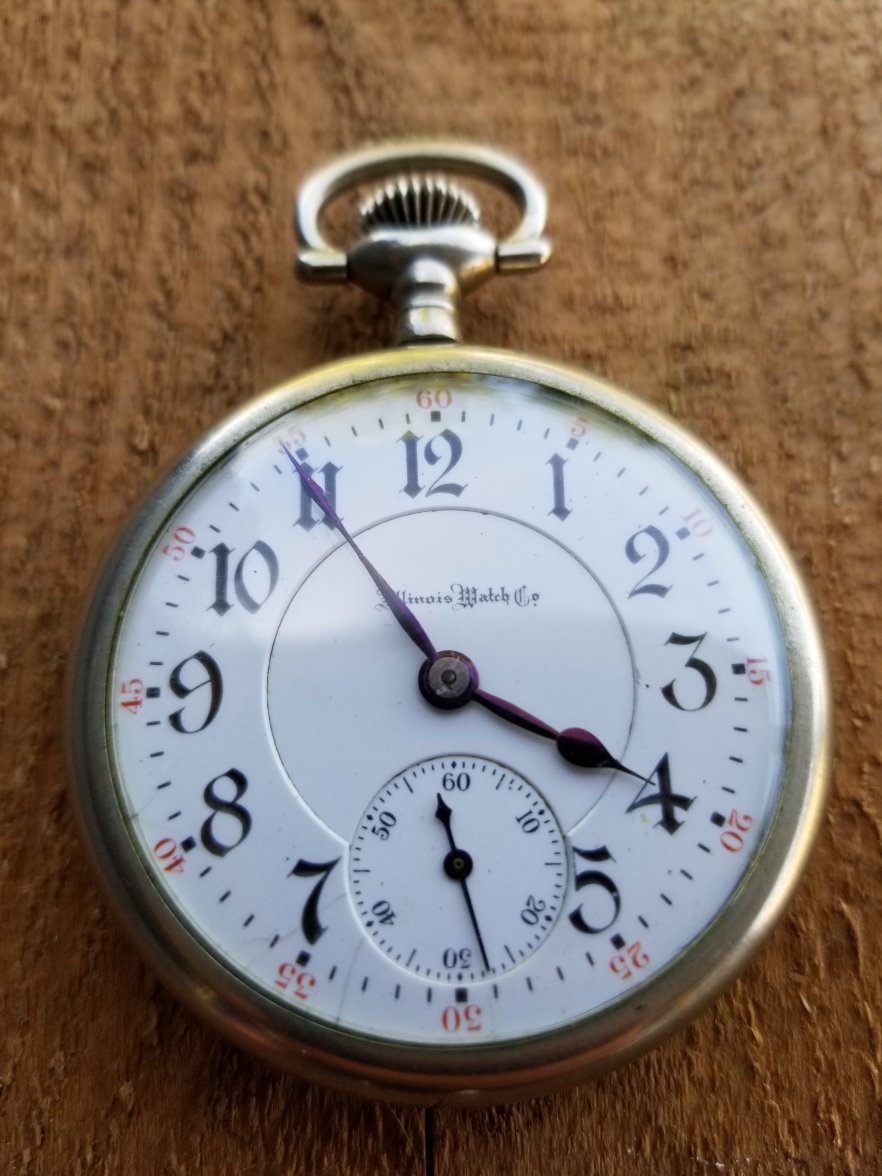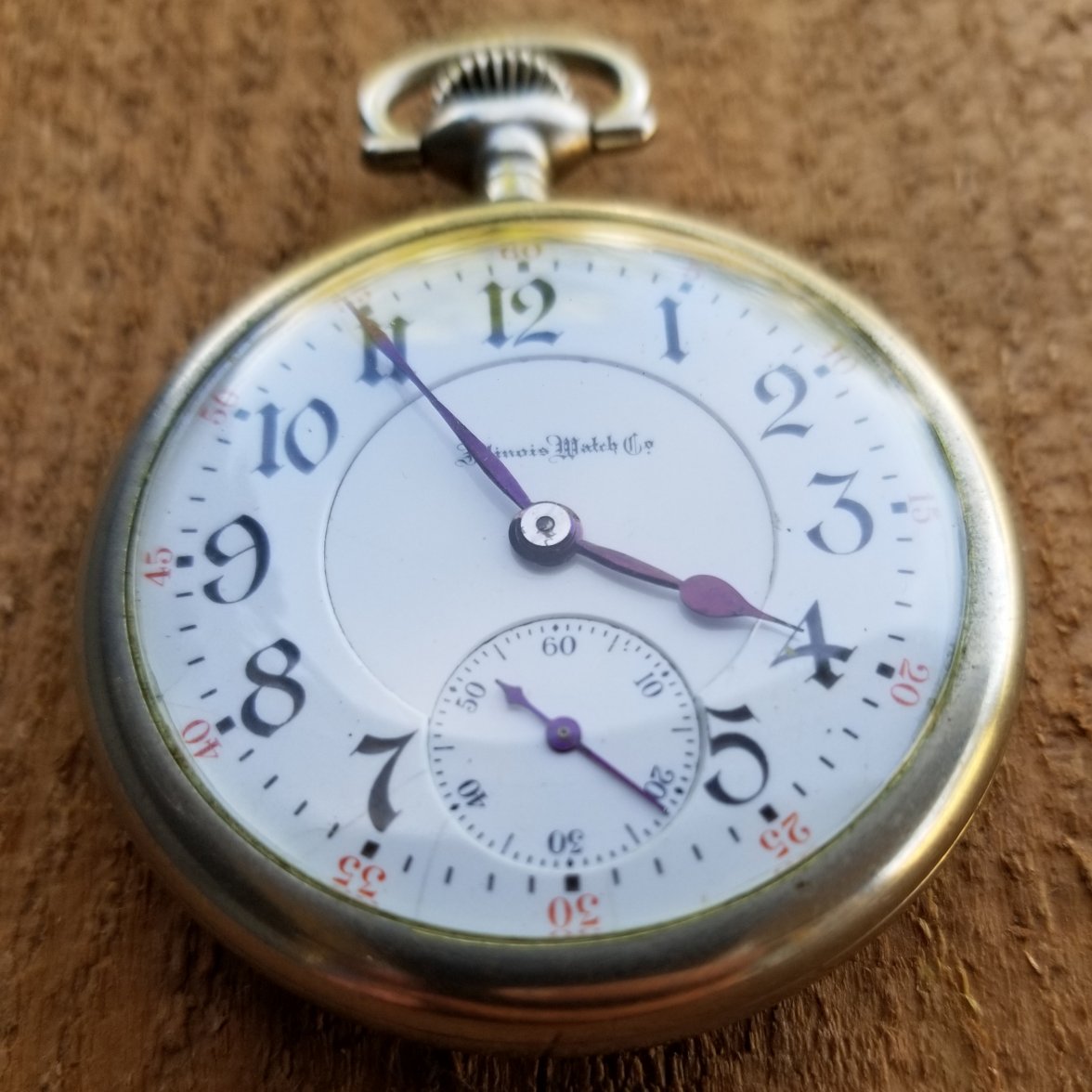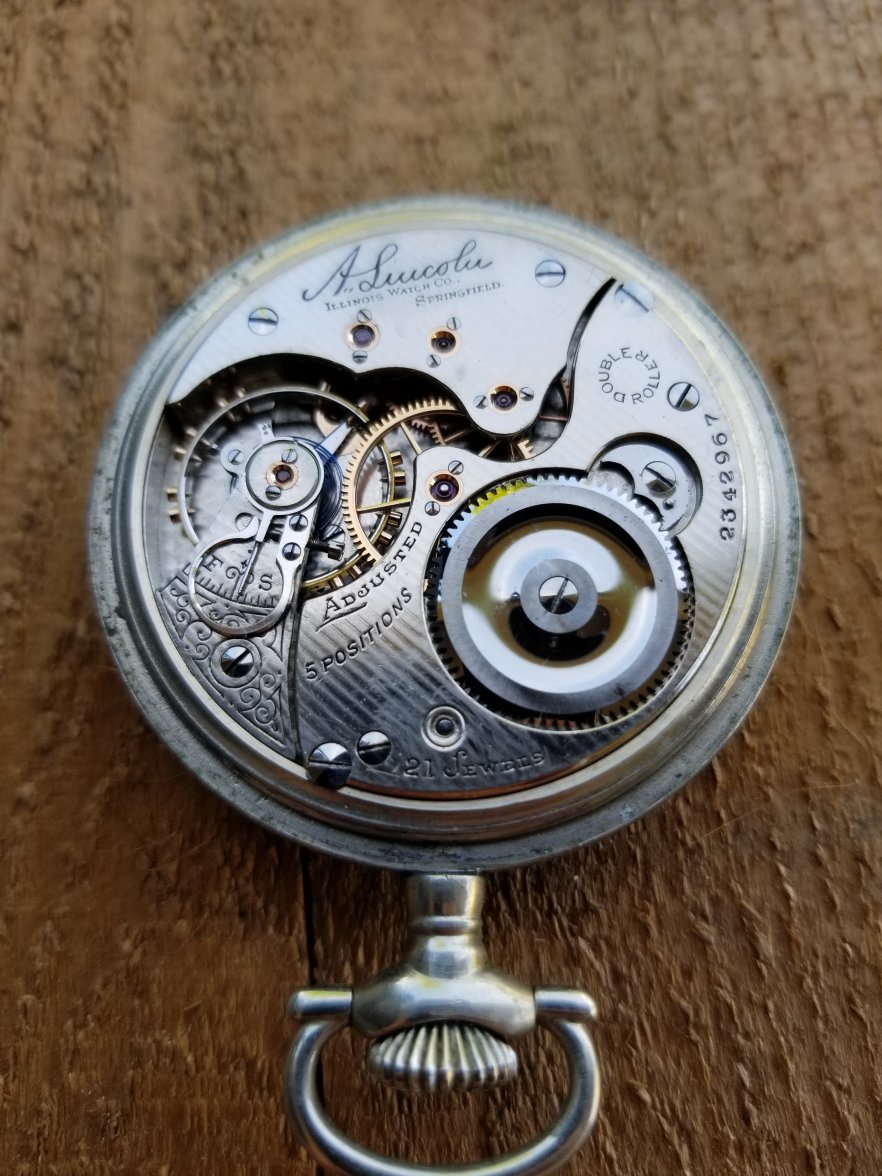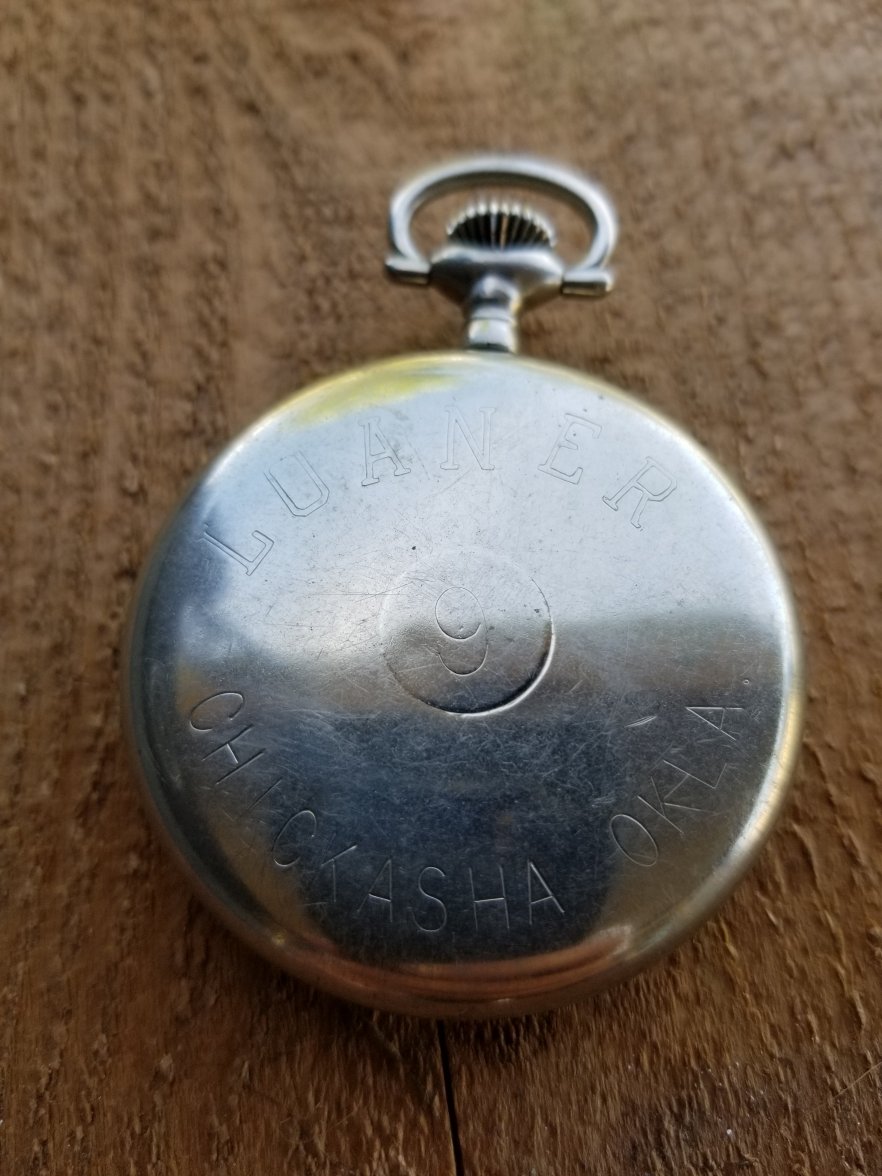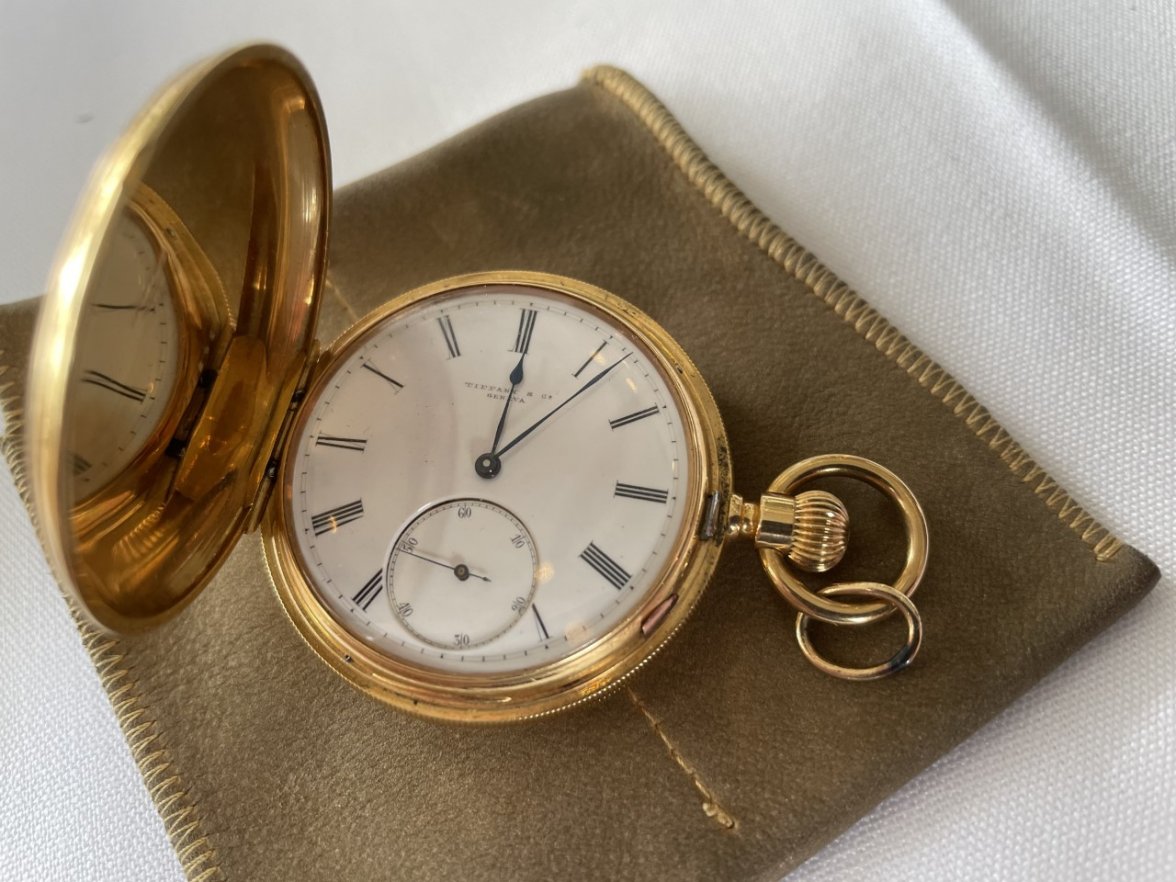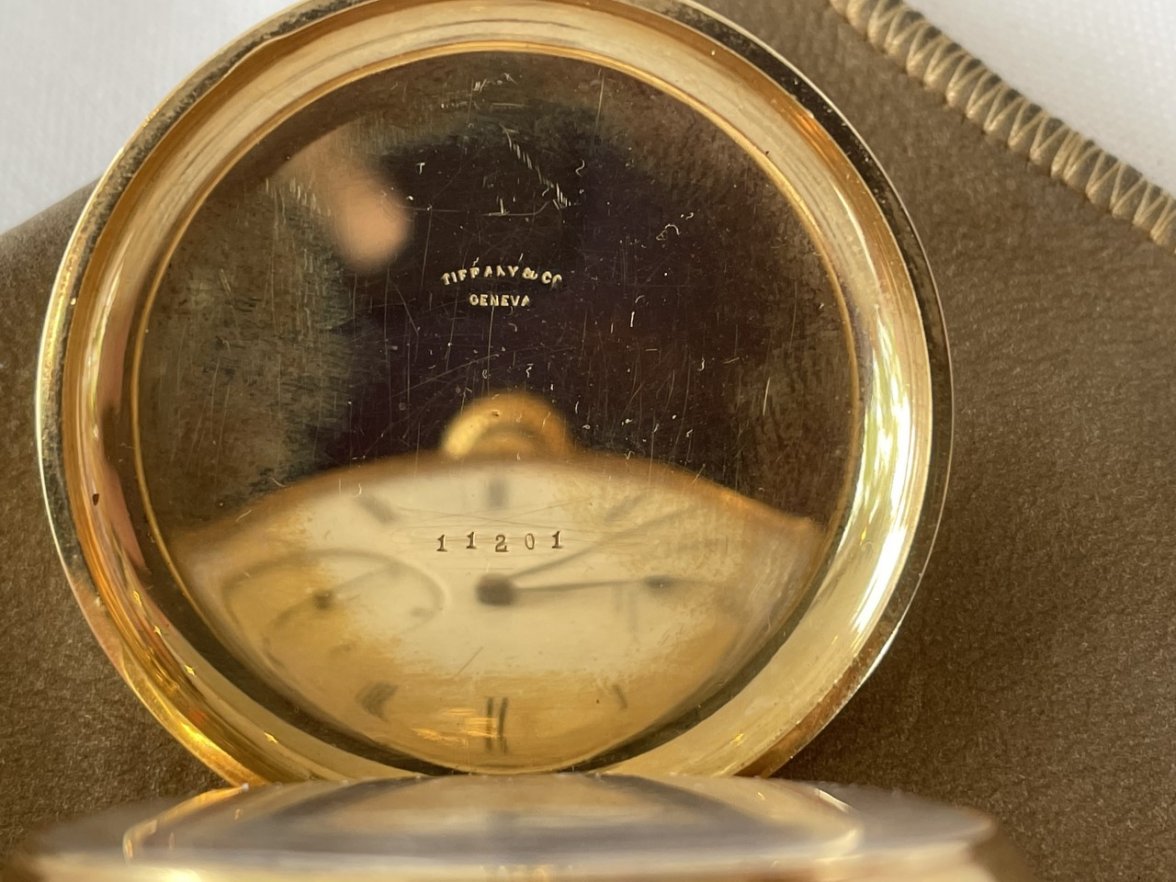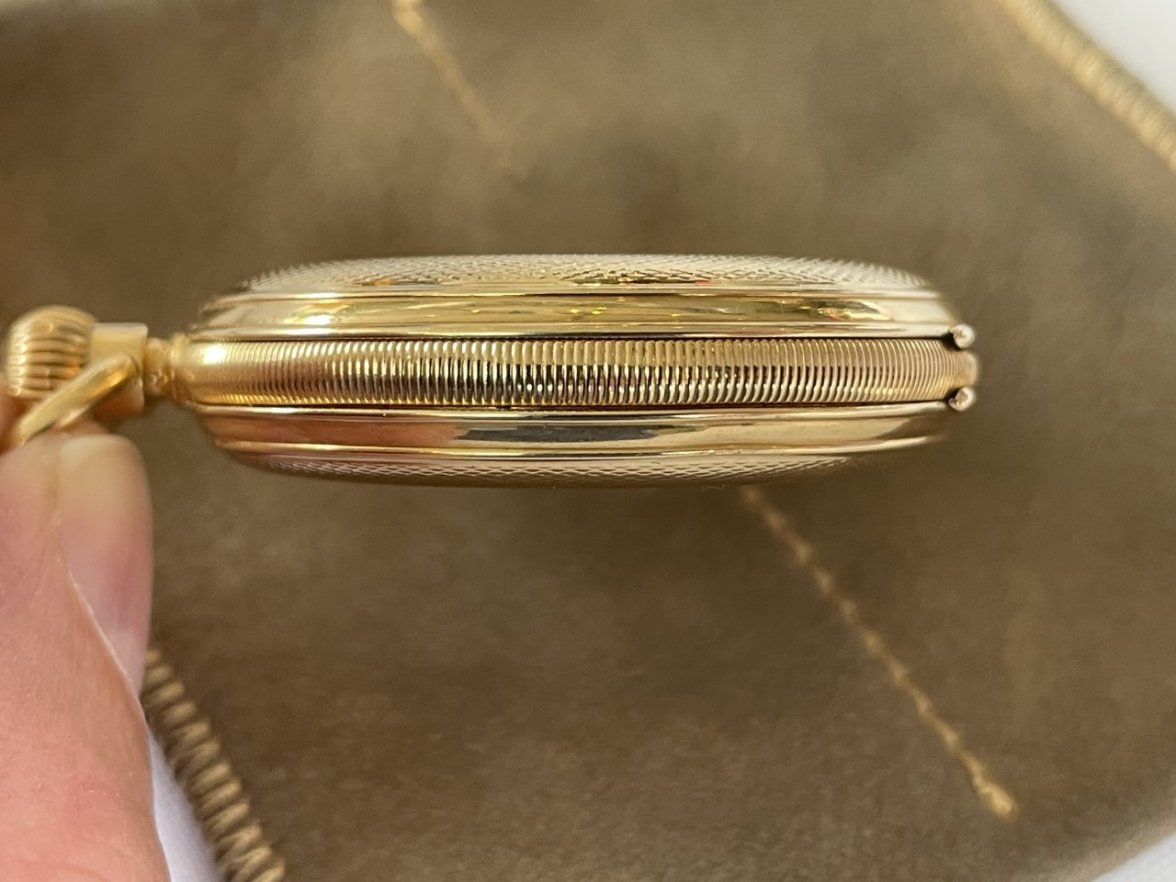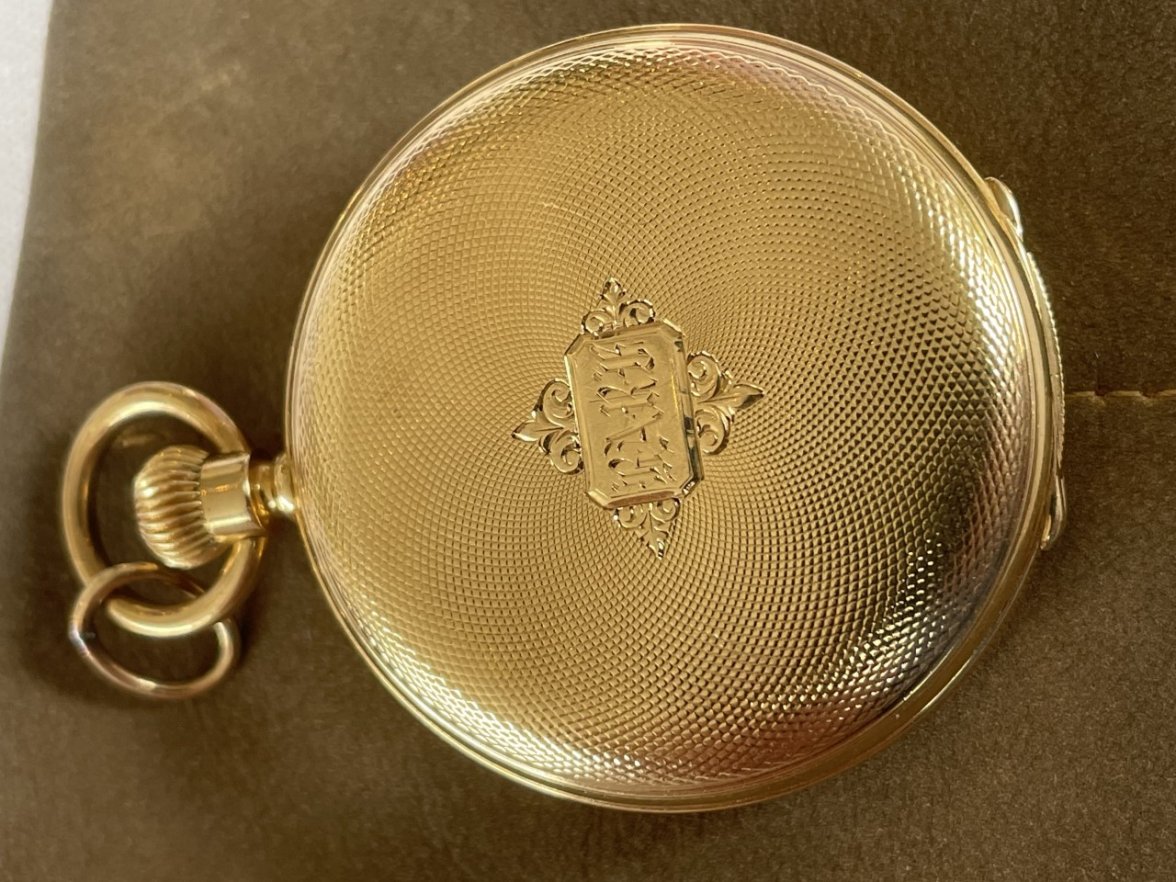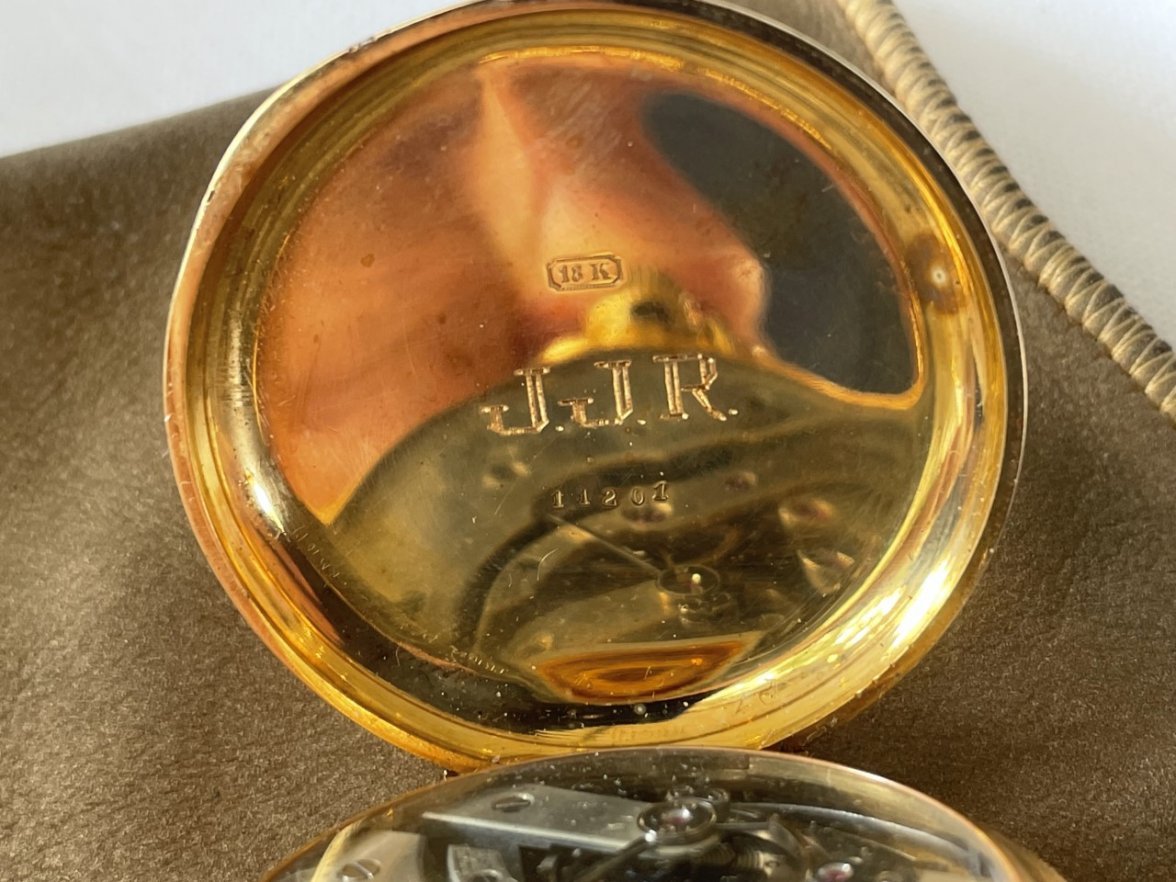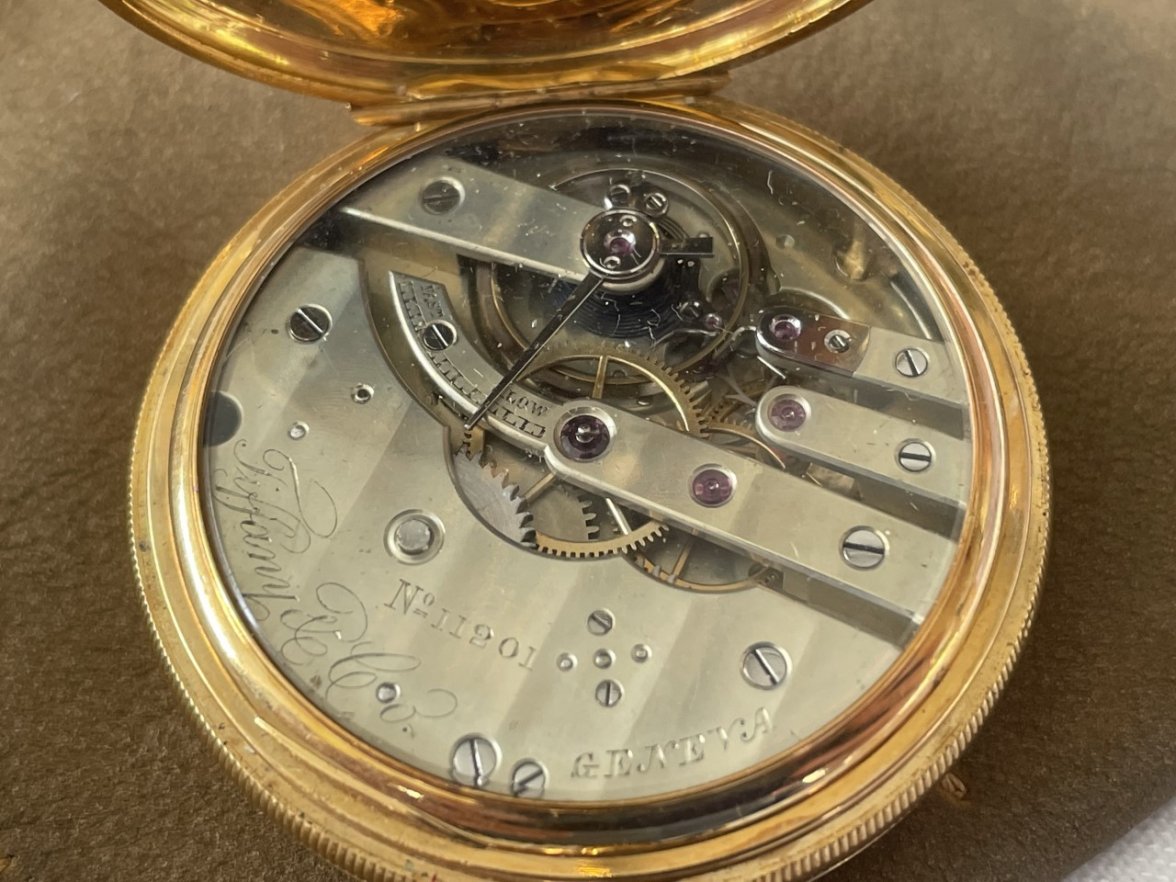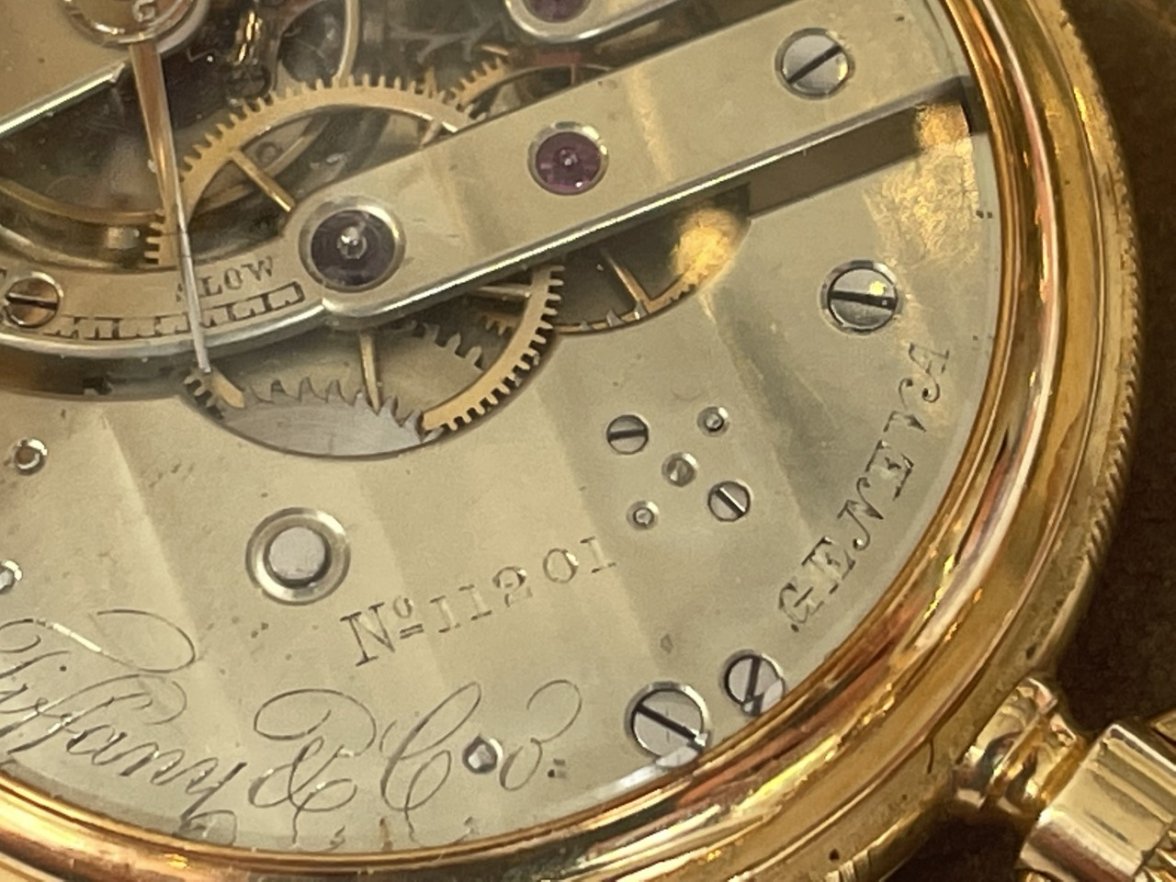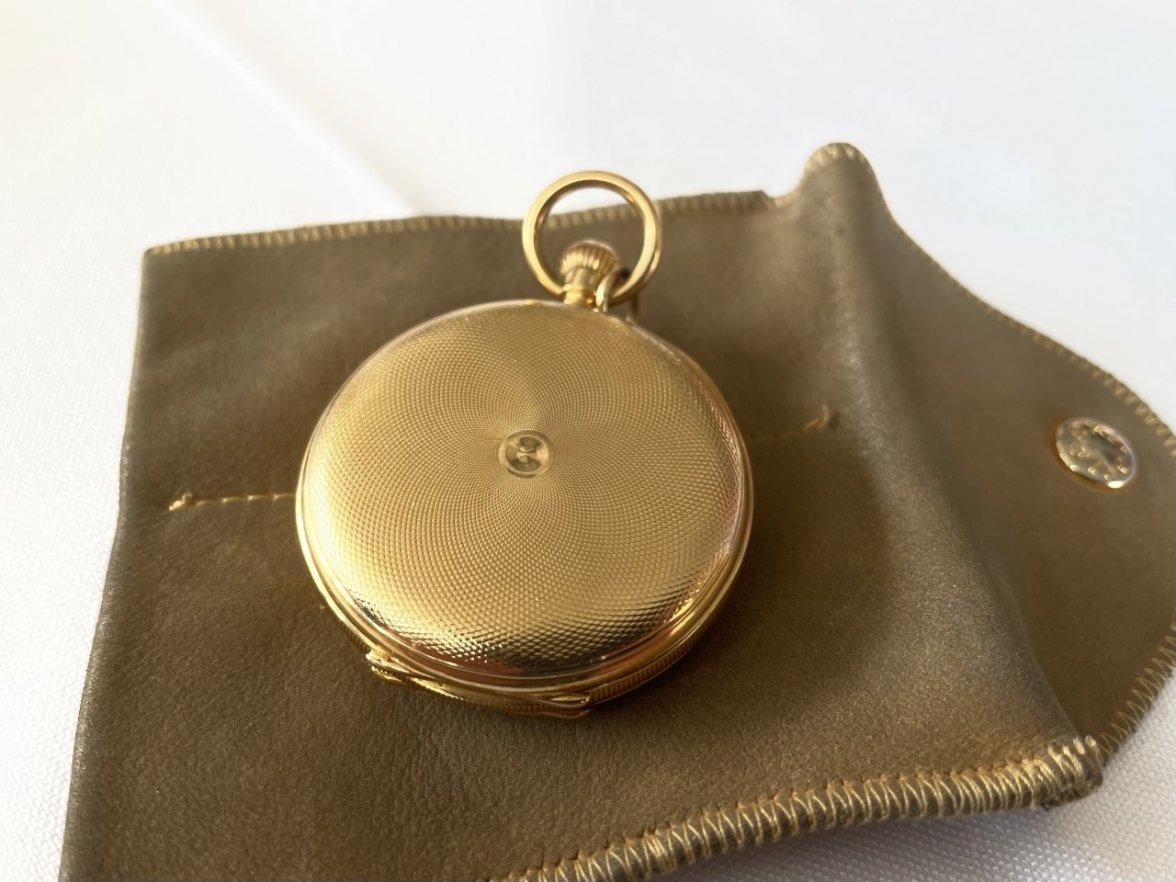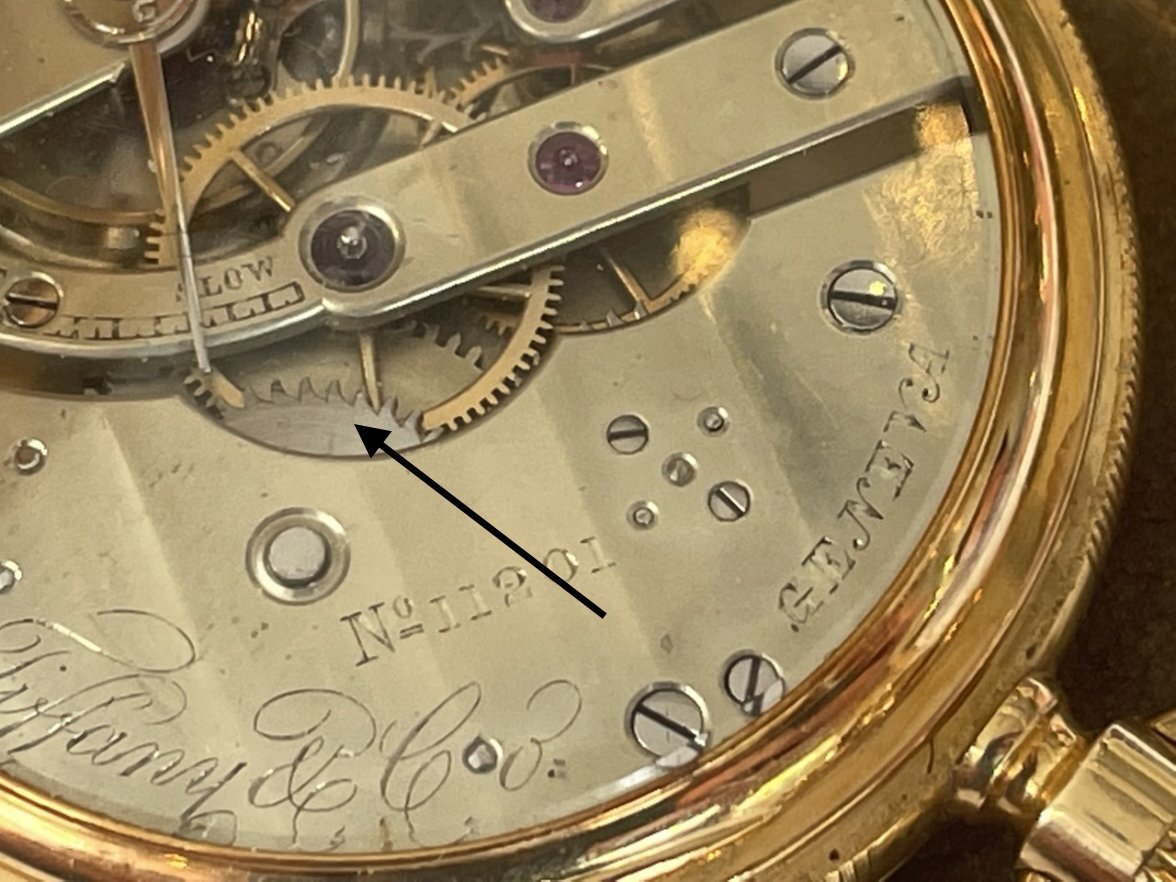Canuck
·About 20 years ago, a fellow brought me the subject watch for an estimate for repair. The movement is only a 7-jewel model. When I quote on a 7 jewel watch, I quote a higher price than I do for watches with 15, 17, 19 jewels, or more. I usually have to contend with worn bearings on 7-jewel models. He declined the repair, and never picked it up! I took a look at it on Sunday, and decided it had possibilities. I’m sure it hasn’t been worked on after it left Elgin in 1919, or so. It had likely been lubed with whale oil! I could not believe how it was gummed up. It was difficult to take the movement apart. I had to peg the bearings, scrub it with Mr. Clean solution and water, rinse it, dry it thoroughly, and clean it again, in L & R Extra Fine cleaner. Even at that, I had to glass brush the congealed oil off the bearings, and re-clean it. Turned out nice!
The case is a 10 year gold filled case. The style is called a Demi hunter (half hunter), and the numerals are translucent blue vitreous enamel. The enamel is not damaged, and that is unusual! The movement is Elgin. The inner cuvette indicates it was a presentation to the secretary of a union in Newtownards, County Cork, Ireland, in 1920. The hour hand is a “double spade” style, typical of a Demi-hunter, allowing the time to be read without opening the front cover.
Well, it has been returned to the family of the original owner. The watch was presented on September 27, 1920, as an award. The inner cuvette was engraved with all the details, and his name. He never used it. It was left to his son, same name, and he never used it. He, in turn, left it to his son, same name, and he never used it. To day, the great grandson of the original owner picked it up after I serviced it. He has the same name as the three previous owners! The third generation owner is now deceased. It is now in the hands of the fourth generation. The watch is now back in the original owner’s family, 6 days short of the original presentation date, 101 years ago. And to think that the watch was brought to me for repair decades ago, and the (then) owner declined the estimate, and never picked it up! I could have added it to my collection, and the family would have been none the wiser. Strangely, I feel good about letting it go!
